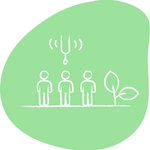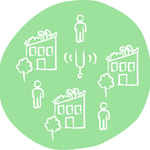Seven Business Attributes and Seven Archetypes to inspire action
The Regenerative Shift in BusinessHEC Paris White Paper
This white paper draws insights from both academic research and the practices of 39 leading organizations, with its key contribution being the introduction of seven attributes and seven archetypes of regenerative businesses. While it strengthens the academic foundation of the regenerative business concept, its main aim is to inspire practical action beyond a buzzword.

Regenerative approaches integrate nature into socio-economic systems, going beyond sustainability and circularity to actively restore planetary health. By embracing systems thinking, adaptation, collaboration, and nature-based solutions, businesses can strengthen climate resilience and halt biodiversity loss. This work by Laurence Lehmann-Ortega, HEC Paris Professor of Strategy and Sarah Dubreil, Founder of circl-earth, bridges research and practice to help organizations, policymakers, and educators embed regenerative principles into strategies that drive transformational and climate-resilient change.
They conducted a study of 39 pioneering organizations and combined it with a rigorous academic review to deepen the concept of regenerative business. The result is a dual framework: seven core attributes that define regenerative maturity, and seven archetypes that illuminate how companies can align business strategy with systemic renewal.
Seven Attributes to Guide Strategic Transformation
that define regenerative business design
- System-Level Impact – Does the business shift its value chain, industry, or ecosystem toward systemic health?
- Relationship to Ecosystems – Does it extract from or co-evolve with nature?
- Elevation of Human Potential – Does leadership cultivate agency, care, and adaptation?
- Rootedness in Place – Is the business deeply connected to its social-ecological territory?
- Temporal Orientation – Are decisions made with short-term pressure or long-term planetary cycles in mind?
- Business Design – Do ownership, governance, and finance mechanisms support regeneration?
- Net Positive Outcomes – Can the business demonstrate improvement in human, social, and ecological well-being?
The Seven Archetypes of Regenerative Business
Brands that challenge industry logic through transparency, bold narratives, and governance aligned with ecological goals.
|
Organizations that redesign supply chains to regenerate ecosystems and build local producer capacity.
|
| Business models that link premium product sales with financing for community and environmental restoration. 🟢 Example: Guayaki, which leverages North American sales to support reforestation in South America. |
Organizations that facilitate peer learning, sector-wide co-evolution, and systemic transitions.
|
Institutions that reshape standards, narratives, and customer expectations to create systemic change.
|
Place-based projects — farms, third spaces, tourism hubs — that demonstrate regeneration as lived experience.
|
Entities that enable local communities to self-organize for social and ecological flourishing.
|
Methodology
To go further, please download the methodology of the authors:
Contacts


Systemic & regenerative strategy for business







